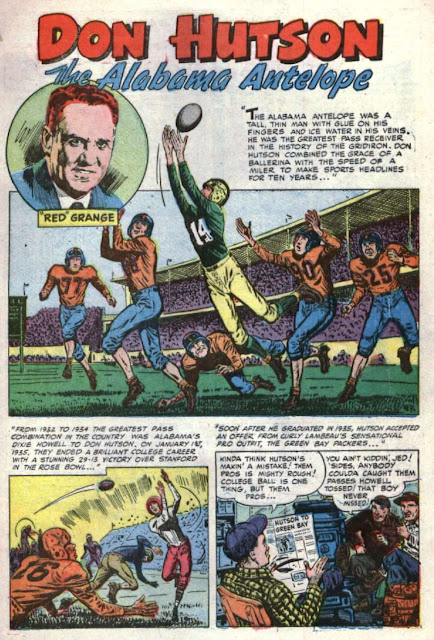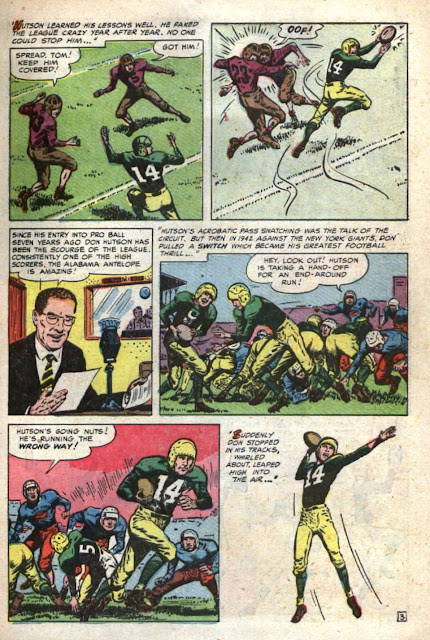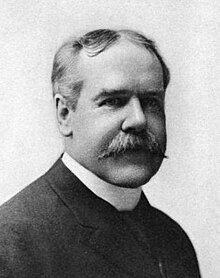Many of Cohen's stories and novels feature detectives and criminals. Covers of paperback editions of three of his novels are below. Follow the BhamWiki link for more information about Cohen. During his lifetime many films were made based on his stories and novels.
Thursday, August 6, 2015
Alabama Book Covers (1): Novels by Octavus Roy Cohen
Octavus Roy Cohen was an extremely prolific author of dozens of novels and hundreds of short stories. He lived in Birmingham before World War I and during the 1920's; many of his stories are set in the city. During his time in Birmingham he was a member of a group of writers and journalists known as The Loafers.
Many of Cohen's stories and novels feature detectives and criminals. Covers of paperback editions of three of his novels are below. Follow the BhamWiki link for more information about Cohen. During his lifetime many films were made based on his stories and novels.
Many of Cohen's stories and novels feature detectives and criminals. Covers of paperback editions of three of his novels are below. Follow the BhamWiki link for more information about Cohen. During his lifetime many films were made based on his stories and novels.
Monday, August 3, 2015
Visiting Smuteye, Alabama
Recently my brother Richard & I took one of our jaunts through Alabama and family history via a road trip to places significant in our parents' and ancestors' lives. On this particular trip we visited Brundidge, Camp Hill, Tallassee and more; I'll be writing blog posts about all of them. The series begins with some photos and notes about Smuteye in Bullock County.
First, a map. Here's a detail from an Alabama Highway Department map of Bullock County in 1937. In the southeast corner you can see Smut Eye and indications of several buildings and churches. In the northwest corner note the community of Aberfoil; I'll be doing a blog post related to that place as well. Both of these locations are south of the county seat of Union Springs. At the bottom of this post you'll find a detail from a 2006 highway department map. "Smut Eye" has become "Smuteye".
You can find a web site about the Smuteye community here. A page on that site gives history of the area and the story of the name's possible origin. The site also reprints a 1999 story from the Montgomery Advertiser about the origins of many of Alabama's strange place names. Available elsewhere are similar stories from 2012 by Beverly Crider and one from 2014 by Kelly Kazek. Leada Gore also published one in August 2015. Smuteye has a Wikipedia page.
First, a map. Here's a detail from an Alabama Highway Department map of Bullock County in 1937. In the southeast corner you can see Smut Eye and indications of several buildings and churches. In the northwest corner note the community of Aberfoil; I'll be doing a blog post related to that place as well. Both of these locations are south of the county seat of Union Springs. At the bottom of this post you'll find a detail from a 2006 highway department map. "Smut Eye" has become "Smuteye".
You can find a web site about the Smuteye community here. A page on that site gives history of the area and the story of the name's possible origin. The site also reprints a 1999 story from the Montgomery Advertiser about the origins of many of Alabama's strange place names. Available elsewhere are similar stories from 2012 by Beverly Crider and one from 2014 by Kelly Kazek. Leada Gore also published one in August 2015. Smuteye has a Wikipedia page.
We found this business in Smuteye, but it wasn't open in the middle of a Saturday afternoon in July. Just to the right, however, was the meat smoker, which was obviously hard at work.
Here are photos of the front and side of the Phillips family grocery in Smuteye. The community history linked above gives information about the family's ownership.
Look closely at this white sign, and you can make out "SMUTEYE GRO".
We couldn't tell how long the sign had been in place, but the house behind it is obviously pretty old.
Wednesday, July 22, 2015
Old Alabama Stuff (8): The "Alabama Antelope" in "Football Thrills"
One of the football greats at the University of Alabama before World War II was Don Hutson. Born in Pine Bluff, Arkansas, in 1913, Hutson graduated from Alabama in 1934. Six different organizations named him first-team All-American after his senior year playing receiver, safety and kicker on the football team.
Hutson signed with the Green Bay Packers in 1935 and played eleven seasons of pro football. By the time he retired he held eighteen National Football League records and had created many of the routes used by receivers today. He is considered one of the greatest receivers in NFL history and was inducted into the Pro Football Hall of Fame in 1963.
Hutson is featured on four pages of the second issue of Football Thrills, a comic book that appeared in 1952. You can read those pages below. The entire comic can be found at the Comic Book Plus site if you also want a larger size and to read the stories about Bronco Nagurski or Casual Kazmaier.
This comic book was supposedly edited by "Red" Grange, another football great known as the "Galloping Ghost." Grange played running back at the University of Illinois and for the Chicago Bears. He was a charter member of both the College and Pro football halls of fame. Be sure and read Grange's opening comments on Hutson.
Whatever happened to such great nicknames for football players?

Hutson signed with the Green Bay Packers in 1935 and played eleven seasons of pro football. By the time he retired he held eighteen National Football League records and had created many of the routes used by receivers today. He is considered one of the greatest receivers in NFL history and was inducted into the Pro Football Hall of Fame in 1963.
Hutson is featured on four pages of the second issue of Football Thrills, a comic book that appeared in 1952. You can read those pages below. The entire comic can be found at the Comic Book Plus site if you also want a larger size and to read the stories about Bronco Nagurski or Casual Kazmaier.
This comic book was supposedly edited by "Red" Grange, another football great known as the "Galloping Ghost." Grange played running back at the University of Illinois and for the Chicago Bears. He was a charter member of both the College and Pro football halls of fame. Be sure and read Grange's opening comments on Hutson.
Whatever happened to such great nicknames for football players?
Football Thrills Issue #2, fall 1952
Don Hutson
Source: Encyclopedia of Alabama/UA Bryant Museum
This issue also featured an ad for the exciting "Jim Prentice Electric Football" game!
Sunday, July 19, 2015
Old Alabama Stuff (7): Alabama Sketches by Samuel Minturn Peck
Samuel Mintern Peck was born in Tuscaloosa in 1854 and died there in 1938. His father was attorney Elisha Wolsey Peck, who served as Chief Justice of the state supreme court from 1869 until 1873 despite having opposed secession. The son graduated from the University of Alabama in 1876 with a master's degree, and to please his parents began medical school in New York City. He graduated in 1879, but never practiced. His real love was literature, and his father's death in 1888 made him a wealthy man able to indulge that love for the rest of his life.
Peck had begun publishing poetry while in medical school, and his first collection, Cap and Bells, appeared in 1886. Those 86 light verse poems proved very popular; the book went through five editions. Peck continued to write and publish poetry; his final collection Autumn Trail came out in 1925. Six years later the Alabama Writers' Conclave created an honorary position of Poet Laureate of Alabama and named Peck to fill it. After his death the post remained unfilled until 1954.
Peck also wrote a great deal of prose, including articles for various newspapers and "sketches" for such magazines as Collier's Weekly. Some of these latter pieces were collected as Alabama Sketches published in 1902. In some of them the town of "Oakville" substitutes for Tuscaloosa.
Although he managed to gain some popularity during his lifetime, Peck's poetic and prose work is now considered mostly pedestrian and read by few. His remaining importance lies in that fact he was the state's first Poet Laureate and one of the rare individuals from Alabama before World War II who devoted a lifetime to literature.
Peck had begun publishing poetry while in medical school, and his first collection, Cap and Bells, appeared in 1886. Those 86 light verse poems proved very popular; the book went through five editions. Peck continued to write and publish poetry; his final collection Autumn Trail came out in 1925. Six years later the Alabama Writers' Conclave created an honorary position of Poet Laureate of Alabama and named Peck to fill it. After his death the post remained unfilled until 1954.
Peck also wrote a great deal of prose, including articles for various newspapers and "sketches" for such magazines as Collier's Weekly. Some of these latter pieces were collected as Alabama Sketches published in 1902. In some of them the town of "Oakville" substitutes for Tuscaloosa.
Although he managed to gain some popularity during his lifetime, Peck's poetic and prose work is now considered mostly pedestrian and read by few. His remaining importance lies in that fact he was the state's first Poet Laureate and one of the rare individuals from Alabama before World War II who devoted a lifetime to literature.
Samuel Mintern Peck around 1910
Source: Wikipedia
Thursday, July 16, 2015
Alabama Book Spotlight: Birmingham City Directory 1909
The pages below come from the 1909 Birmingham City Directory published by R.L. Polk & Company. Founded in Detroit in 1870 to publish business directories, the company began issuing city directories that included individuals in 1872. The firm continues to operate today.
In this and future blog posts I'll be taking a look at some of these directories and their contents from various cities in Alabama. Older city directories are widely used by genealogists and other local historians, but they are fun to just dip into and see what can be found. Here goes on a few pages of the 1909 directory for Birmingham, which I accessed via the subscription site Ancestry.com
Here we can see types of businesses people in Birmingham needed in 1909 and still need today: roofers, hardware, electric and laundries.
This page includes a list of restaurants and "lunch rooms" operating in the city in 1909. Eating out has been popular for a long time!
In 1909 some people could attend Spencer Business College, "A School Backed by an Experienced Faculty." Also available was Adams Drug Company, "Open All Night." The city never sleeps.
One of these pages features the ad for Eaton's Business College, "For Colored Young Men and Women."
Some typewriter companies and services are listed on these pages. I used both manual and electric typewriters frequently in the 1960's and 1970's for work and my own writing. I miss them in many ways. There's something satisfying about all that pounding and noise.
In this and future blog posts I'll be taking a look at some of these directories and their contents from various cities in Alabama. Older city directories are widely used by genealogists and other local historians, but they are fun to just dip into and see what can be found. Here goes on a few pages of the 1909 directory for Birmingham, which I accessed via the subscription site Ancestry.com
Here we can see types of businesses people in Birmingham needed in 1909 and still need today: roofers, hardware, electric and laundries.
This page includes a list of restaurants and "lunch rooms" operating in the city in 1909. Eating out has been popular for a long time!
In 1909 some people could attend Spencer Business College, "A School Backed by an Experienced Faculty." Also available was Adams Drug Company, "Open All Night." The city never sleeps.
One of these pages features the ad for Eaton's Business College, "For Colored Young Men and Women."
Some typewriter companies and services are listed on these pages. I used both manual and electric typewriters frequently in the 1960's and 1970's for work and my own writing. I miss them in many ways. There's something satisfying about all that pounding and noise.
Finally we have a full page ad for The Reliance Hotel and Restaurant Company "Opposite New Terminal Station." They have all "modern conveniences" and the "European Plan." I know nothing more about this hotel; even the BhamWiki site doesn't have an entry for it.
Monday, July 13, 2015
Birmingham Photos of the Day (35): Even More Hospitals
Two recent posts in this series here and here have offered photos related to some hospitals in the city. These four images are also related to such institutions, but go beyond the actual buildings. One is not even a photograph. Some comments are included.
Source: University of Alabama at Birmingham Archives
Nursing class at Norwood Hospital on August 21, 1921.
Dr. Charles Carraway had moved his clinic from Pratt City to Norwood in 1916. The hospital, eventually renamed Carraway, grew into a massive complex that finally closed in 2008 but remains today as a sad urban ruin.
Dr. Charles Carraway had moved his clinic from Pratt City to Norwood in 1916. The hospital, eventually renamed Carraway, grew into a massive complex that finally closed in 2008 but remains today as a sad urban ruin.
Source: Alabama Department of Archives & History Digital Collections
This 1911 photograph shows Dr. Joseph G. Moore and five Hillman Hospital nurses identified only as Aldiffer, Black, Clifton, Ramsay and Smith.
Moore graduated from the Birmingham Medical College in 1911. The college operated from 1894 until 1915. The Birmingham Yellow Pages for 1920 shows Dr. Joseph G. Moore with an office in the Empire Building.
Moore graduated from the Birmingham Medical College in 1911. The college operated from 1894 until 1915. The Birmingham Yellow Pages for 1920 shows Dr. Joseph G. Moore with an office in the Empire Building.
Source: University of Alabama at Birmingham Archives
First page of the August 1906 contract between the Birmingham Medical College and the Board of Lady Managers of Hillman Hospital. The entire document is three pages in length.
Source: University of Alabama at Birmingham Archives
This newspaper advertising flyer from May 1960 notes expansion of St. Vincent's and Children's hospitals. A readable version can be found at the Birmingham Public Library Digital Collections.
Thursday, July 9, 2015
Alabama Connections of Actor Bruce Willis
Bruce Willis is one of the most recognizable movie stars working today. His film career began in 1980 with a bit part in The First Deadly Sin starring Frank Sinatra and Faye Dunaway. The part is uncredited; he plays "Man Entering Diner."
Since then he has found great success in such films as the Die Hard franchise, Pulp Fiction, 12 Monkeys, Looper and many others. He has worked very little in television, except for Moonlighting, the 1985-1989 series with Cybill Shepherd that made him a star. He won an Emmy and a Golden Globe for his role in the light-hearted detective show.
Back in March of this year an announcement appeared noting that Willis will make his Broadway debut this fall in an adaptation by William Goldman of Stephen King's novel Misery. The production is scheduled to open in November and run into early February 2016.
Willis is no stranger to the stage. Early in his career he acted in such Off-Broadway productions as Heaven and Earth and Bullpen.
So-what connections does Willis have to Alabama?
In the past couple of years he has been to Mobile filming several movies. The Prince was released in 2014 and Vice earlier this year. A third film, Extraction, has been filmed but not yet released. He and Nicholas Cage seem to be regulars in the port city lately.
Another connection? One of his daughters is named Tallulah Belle--perhaps after legendary Alabama actress Tallulah Bankhead??
And there is yet another connection from very early in his acting career. In 1981 he played the Sheriff in the Labor Theater's production of Railroad Bill at St. Peters Hall in New York City. The play was written and directed by Charles Portz, co-founder of the Labor Theater. The story was based on the brief career of black Alabama train robber Morris Slater--better known in song and story as "Railroad Bill."
So there you have them--the tenuous but fun connections of Bruce Willis to Alabama.
In a future post I want to explore the long career of Railroad Bill in blues and folk music over the past century.

Since then he has found great success in such films as the Die Hard franchise, Pulp Fiction, 12 Monkeys, Looper and many others. He has worked very little in television, except for Moonlighting, the 1985-1989 series with Cybill Shepherd that made him a star. He won an Emmy and a Golden Globe for his role in the light-hearted detective show.
Back in March of this year an announcement appeared noting that Willis will make his Broadway debut this fall in an adaptation by William Goldman of Stephen King's novel Misery. The production is scheduled to open in November and run into early February 2016.
Willis is no stranger to the stage. Early in his career he acted in such Off-Broadway productions as Heaven and Earth and Bullpen.
So-what connections does Willis have to Alabama?
In the past couple of years he has been to Mobile filming several movies. The Prince was released in 2014 and Vice earlier this year. A third film, Extraction, has been filmed but not yet released. He and Nicholas Cage seem to be regulars in the port city lately.
Another connection? One of his daughters is named Tallulah Belle--perhaps after legendary Alabama actress Tallulah Bankhead??
And there is yet another connection from very early in his acting career. In 1981 he played the Sheriff in the Labor Theater's production of Railroad Bill at St. Peters Hall in New York City. The play was written and directed by Charles Portz, co-founder of the Labor Theater. The story was based on the brief career of black Alabama train robber Morris Slater--better known in song and story as "Railroad Bill."
So there you have them--the tenuous but fun connections of Bruce Willis to Alabama.
In a future post I want to explore the long career of Railroad Bill in blues and folk music over the past century.

Bruce Willis at the Cannes Film Festival in 2006
Source: Wikipedia
Source: Wikipedia
Subscribe to:
Posts (Atom)
































